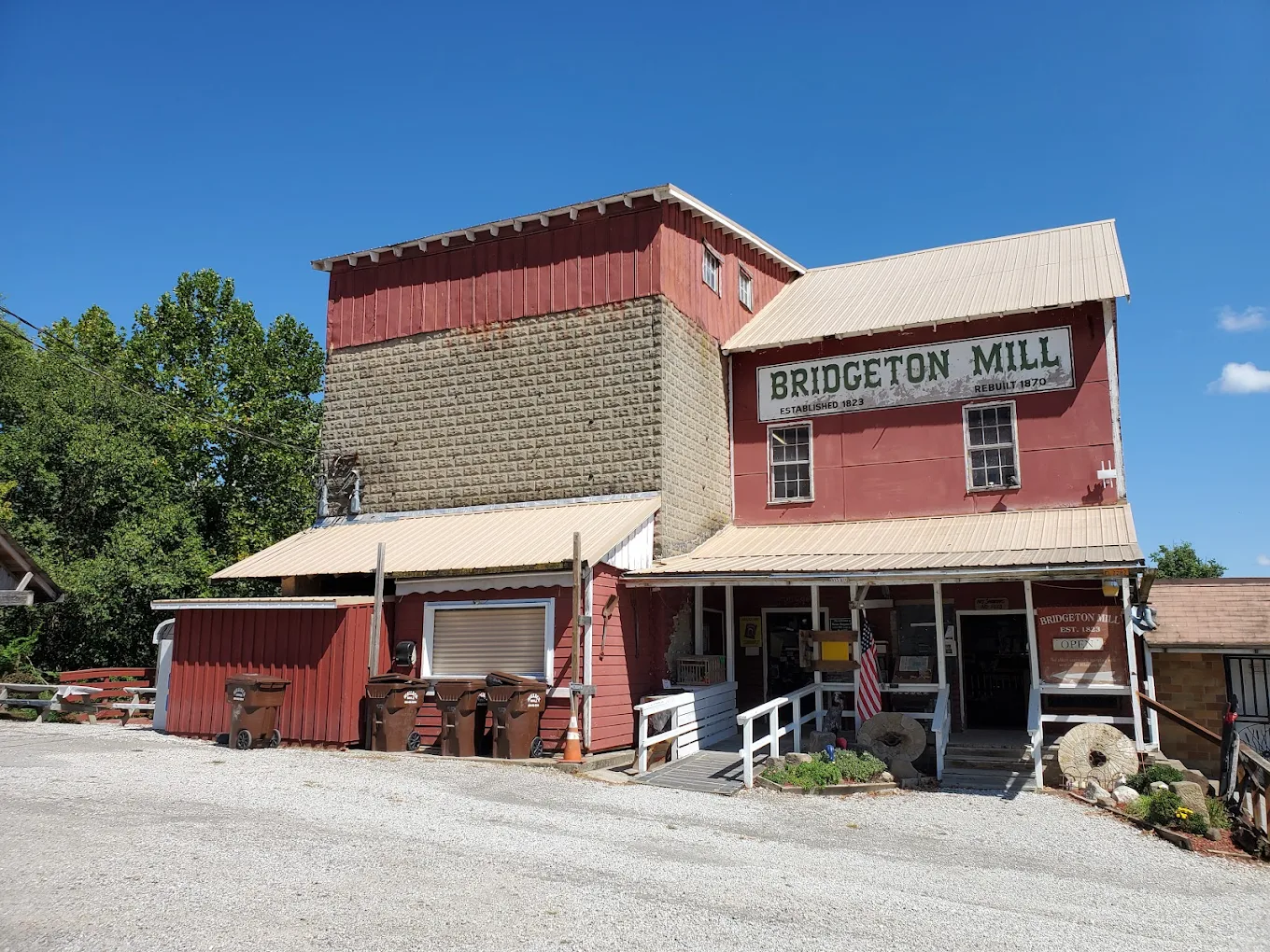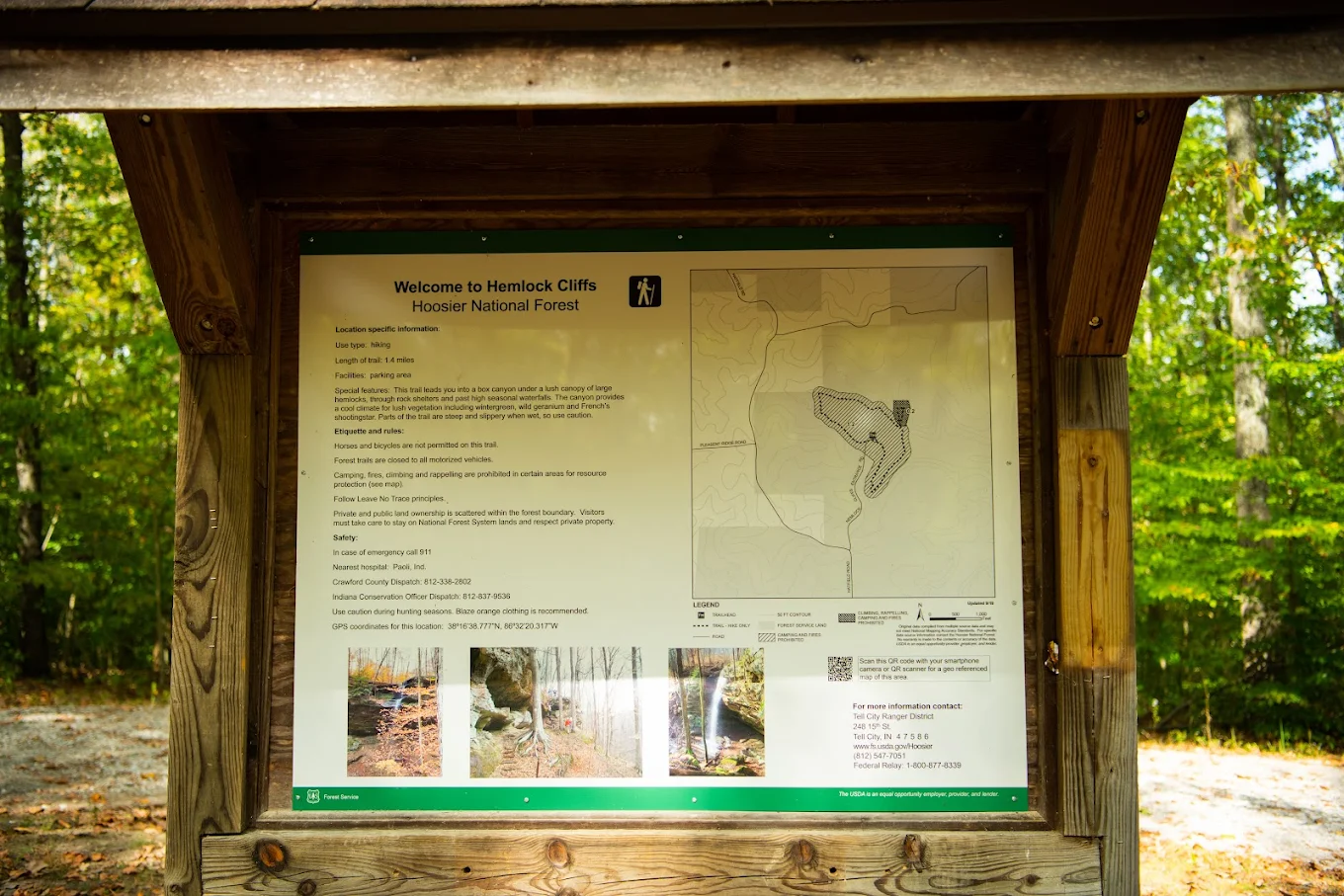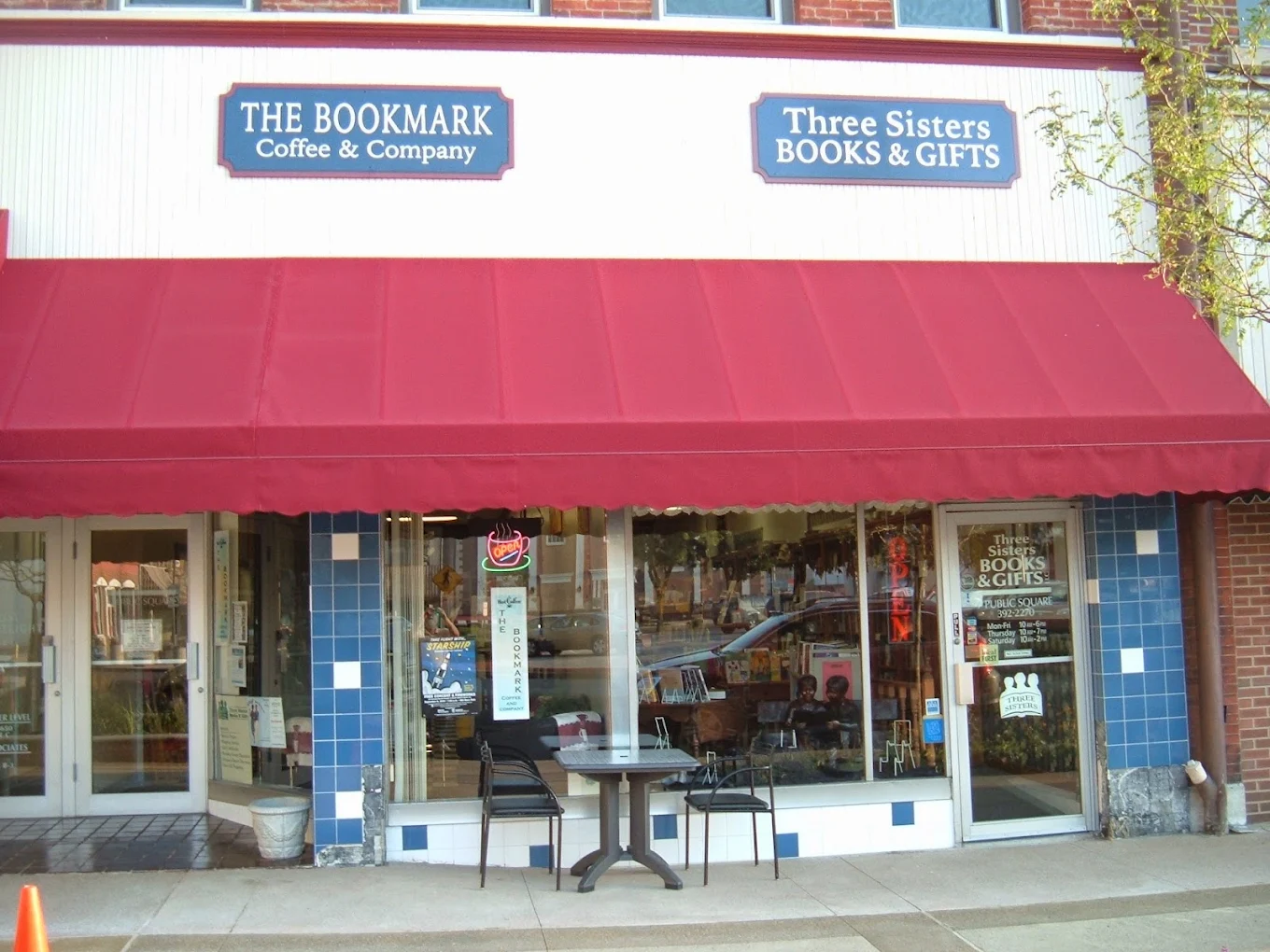A Working Piece of History
Standing proudly on the banks of Raccoon Creek, Bridgeton Mill in Parke County is more than just a historic landmark—it’s a living connection to Indiana’s milling past. Built in 1823 and rebuilt in 1870 after a fire, the mill has been grinding grain for over a century using traditional water-powered methods. Today, it remains one of the few operational mills in the Midwest where visitors can watch flour and cornmeal being produced much as they were in the 1800s.
The bright red wooden building, framed by the famous Bridgeton Covered Bridge, is a favorite stop for photographers and history buffs alike. Its rustic charm and scenic surroundings make it a destination worth visiting any time of year, but especially during the Parke County Covered Bridge Festival each October.
The Power of Water
At the heart of Bridgeton Mill’s operation is its waterwheel system. Water from the creek is channeled through a dam and directed onto a turbine, which in turn powers the grinding stones inside the mill. This method harnesses the natural energy of flowing water, a sustainable process that has stood the test of time. The rhythmic turning of the wheel and the steady hum of the millstones create an atmosphere that feels both industrious and peaceful.
Traditional Milling Techniques
Inside the mill, visitors can see large wooden gears, belts, and pulleys working together to move grain from one stage of processing to the next. The stones used for grinding are carefully dressed to maintain the correct texture and sharpness, ensuring the flour and cornmeal produced here are of the highest quality. These techniques, passed down through generations of millers, are part of what makes Bridgeton Mill’s products unique.
From Grain to Table
The mill produces a variety of stone-ground flours, cornmeal, pancake mixes, and specialty baking products. All are made without additives or preservatives, highlighting the simple, wholesome nature of traditional milling. Many visitors purchase bags of these goods to take home, knowing they’re supporting a small business that values craftsmanship and authenticity.
Recipes and Inspiration
The mill’s owners often share recipes that showcase their products, from classic cornbread to hearty pancakes. Sampling baked goods made with freshly milled flour offers a taste experience that’s hard to match with store-bought ingredients.
A Dedicated Restoration Effort
The current owners have invested years of work into restoring and maintaining Bridgeton Mill. Their efforts have preserved not only the building itself but also the original machinery and the knowledge of how to operate it. Keeping the mill running requires constant attention, from repairing wooden components to ensuring the water flow remains steady and clean.
Community Support
The local community has played a vital role in sustaining the mill’s operations. Volunteers, historians, and mill enthusiasts contribute their time and expertise, and visitors from around the country provide the financial support needed to keep the waterwheel turning. Events, tours, and educational programs all help raise awareness about the importance of preserving such heritage sites.
Exploring the Surroundings
Beyond the mill itself, the surrounding area adds to the charm of a visit. The Bridgeton Covered Bridge, rebuilt in 2006 after the original was destroyed by arson, stretches gracefully across Raccoon Creek beside the mill. Its red-painted wooden sides match the mill, creating one of the most photographed scenes in Indiana. Visitors can walk across the bridge, listening to the creek flow beneath and taking in the view of the dam and waterwheel.
The Covered Bridge Festival
Each October, Parke County hosts the Covered Bridge Festival, a celebration that draws thousands of visitors. Bridgeton becomes a central hub during this event, with the mill offering extended tours, demonstrations, and special products. Vendors set up throughout the town, selling crafts, antiques, and regional foods, creating a lively atmosphere that contrasts with the site’s usual tranquility.
Educational Opportunities
Bridgeton Mill serves as an informal classroom for students, hobbyists, and anyone interested in historic industry. School groups often visit to learn about the history of milling, the physics of waterpower, and the cultural role mills played in early American communities. The owners’ passion for sharing knowledge ensures that each tour is both informative and engaging.
Hands-On Learning
During guided tours, guests can sometimes try turning small hand-crank mills, giving them a sense of the effort involved in producing flour without machinery. These activities help bridge the gap between modern conveniences and the realities of life a century ago.
Shopping and Souvenirs
The mill’s store offers more than just flour and cornmeal. Shelves are stocked with locally made jams, syrups, honey, and handcrafted kitchenware. Many visitors appreciate the opportunity to bring home not only food but also unique, locally sourced gifts that reflect the character of Parke County.
Supporting Local Producers
By sourcing products from area farms and artisans, Bridgeton Mill strengthens the local economy and builds lasting relationships within the community. This commitment to regional partnerships is part of what keeps the mill relevant and sustainable in the modern era.
Planning Your Visit
Bridgeton Mill is open seasonally, with hours varying by time of year. Spring and summer offer lush, green surroundings, while autumn brings a blaze of color to the hillsides and a festive atmosphere during the Covered Bridge Festival. Winter visits are quieter but offer their own kind of beauty, with the red mill standing out against a snowy backdrop.
Visitor Tips
Wearing comfortable shoes is recommended, as exploring the area may involve walking on uneven ground. Bringing a camera is a must for capturing the postcard-worthy scenery. Those interested in the milling process should plan to visit during operating hours to see the machinery in action.
A Living Link to the Past
In an age of mass production and disposable goods, Bridgeton Mill stands as a reminder of the value of craftsmanship, sustainability, and tradition. The sound of the waterwheel turning, the smell of freshly ground grain, and the sight of historic machinery at work all combine to create an experience that is both educational and deeply nostalgic.
For history enthusiasts, photographers, and anyone who appreciates the art of making something well, a visit to Bridgeton Mill is a journey back in time that still resonates today. By preserving its original methods and welcoming the public to witness them firsthand, the mill keeps Indiana’s heritage alive—one bag of flour at a time.




